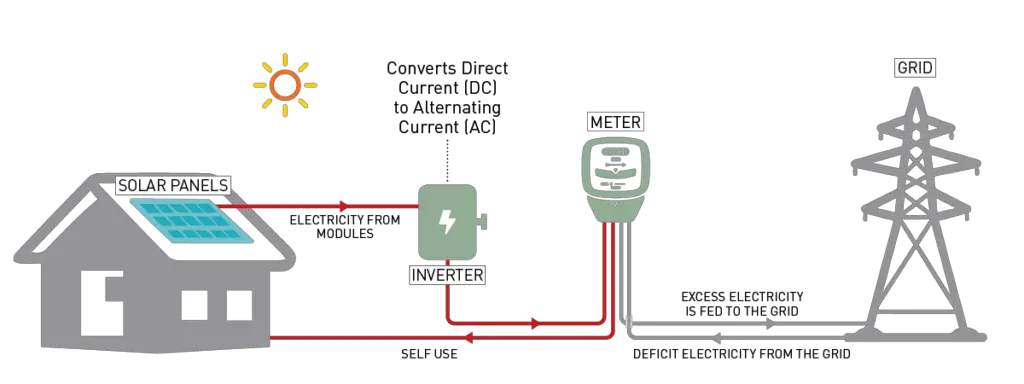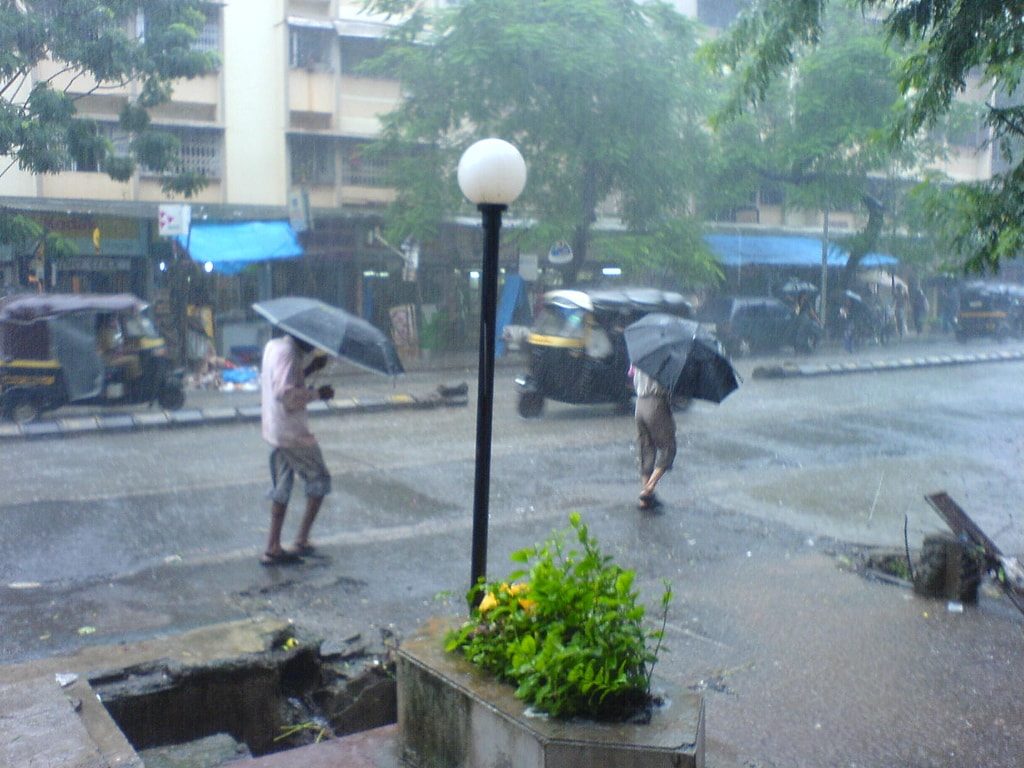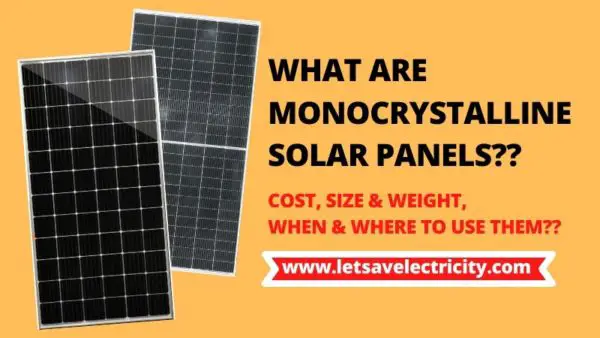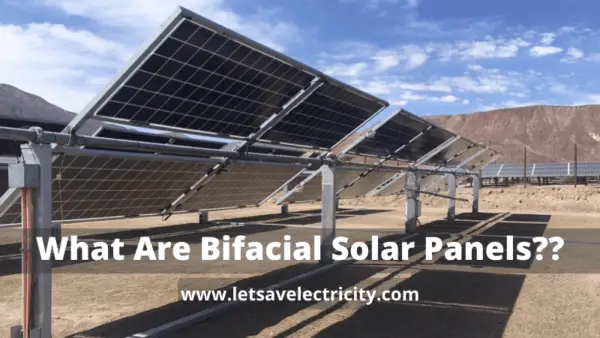With increase in electricity tariff, and solar technology becoming cheaper, more and more people are opting for solar on grid system to produce their own electricity and get rid of their high electricity bills.
Solar on grid system is a grid tied system where your solar system is installed parallel to your existing electricity grid, hence after going solar you will be having two sources of electricity one is your electricity provider and second is solar.
When the sun is shining during the day time you will use electricity from your solar panels to run your appliances and the surplus energy will be fed in the utility grid (export), but when the sun is not shining (at night and during monsoon) you will pull electricity from the utility grid (import) the same way you do before going solar.
Hence after installing solar on grid system you will get electricity bill only for the excess units that you are borrowing from the grid (import – export).
What is solar on grid system?

In conventional solar system your solar panels produces electricity, this electricity is stored in the batteries and you power your appliances from the current coming through these batteries. This is known as a solar off grid system.
The problem with this system is that batteries have limited storage hence you can only run limited number of appliances or else you have to increase the number of batteries to power all your appliances which will increase the upfront cost and the maintenance cost (most batteries needs to be replaced in 4-5 years). To solve all these issues solar on grid system or grid tied solar system was introduced in the market.
In a grid tied solar system, solar panels on your roof convert the sunlight in to DC (Direct Current) electricity, this DC current is fed into solar inverter whose job is to convert the DC current into AC (Alternating Current).
From here electricity is fed to the bi directional meter or net meter which is connected to your house load and electricity grid.
Hence after going solar you will be having two sources of electricity one is your existing electricity grid and the other one is solar. Whenever you need electricity it is pulled from the solar panels and if your solar is not generating electricity then it is pulled from the utility grid.
Whenever you pull electricity from the grid it is called as import and when you put electricity into the grid it is called export.
So at the end of the month you will get electricity bill only for the surplus units that you have imported (Import – Export). This type of billing is called Solar Net Metering, it is widely used around the world.
If you are new to electricity and confused about what is watt, kW, kWh, units of electricity then please read this article on what is watt, kilowatt, kilowatt hour of electricity to understand it.
Solar On grid system working in different scenario:
- When solar produces more: Let’s say your solar produces 1000 kWh out of which 300 kWh you have used live (when the sun was shining) and the rest 700 kWh is exported to the grid, and for night use you have imported 500 kWh. Then for that month your electricity bill will be equal to import – export = 500 kWh – 700 kWh = – 200 kWh. As your solar has produced 200 kWh more this will be credited in your electricity bill for the use in next month, and for this month you will only get fixed meter rent as your electricity bill.
- When solar produces less: Let’s say your solar produces 1000 kWh out of which you have used 700 kWh live (when the sun was shining) and the rest 300 kWh is exported to the grid, and for night use you have imported 500 kWh. Then for this month your electricity bill will be equal to import – export = 500 kWh – 300 kWh = + 200 kWh. As you are importing 200 kWh more this time you will get electricity bill only for that 200 kWh.
Do Solar On Grid System Work at night and monsoon?

During night as there is no sun your solar system won’t generate any electricity, but during monsoon you solar system will work at 50 % of its potential.
How grid tied solar system works in different climate conditions:
- Sun is shining: When the sun is shining you will use your electricity from the solar panels and any excess electricity will be send to the grid for which your will get credit in your electricity bill.
- At night: At night since sun is not shining your solar system won’t generate any electricity, whatever electricity you need will be pulled from your utility grid.
- During monsoon: When it’s raining outside your solar will generate 50-60% electricity, so any excess electricity that is needed will be pulled from the grid.
- During excess requirement: Let’s say there is some function at your house, so your electricity requirement has doubled, during that time you will pull electricity both from solar panels and grid. So they will work as a team to give you all the power you need.
- No grid: If your electricity provider has shut down electricity grid (no power) for some maintenance, then your grid tied solar system will also stop working because when the power is down some wireman is doing maintenance on the grid and if your solar pumps electricity into the grid the wireman will get electrocuted hence for this most of the solar inverters comes with a safety feature known as anti-islanding property that helps to shuts down the solar system the moment your grid stops.
Components needed for on grid solar system:
Government and electricity provider in almost every country puts safety first when it comes to on grid solar system, hence a lot of components are required to make sure every system is safe and sound.
- Solar Panels
- Solar Inverter
- AC & DC Distribution boxes
- AC & DC cables
- Mounting structures
- Bi directional meters
Apart from the above components there are several other components like cable trays, MCCB, RCCB, switches, MC4 connectors etc.
Advantage of solar on grid system:
Grid tied solar system is an ideal system in places where there are very few power outages because you use all your house appliances without using a single battery and using your existing grid as power storage.
- Negligible maintenance: As there is no battery involved in solar on grid system the maintenance cost is negligible. Only maintenance is cleaning of your solar panels. You can check this article to learn how & when to clean solar panels.
- Low upfront cost: The cost of a solar on grid system is half of solar off grid system for the same capacity, plus the government subsidy and tax benefits make it even more affordable.
- Power all devices: After installing a grid tied solar system you can power all your appliances like air conditioner, washing machine, geyser, fridge, TV, water pump, etc.
- Long life: Most of the solar panels comes with a manufacturing warranty of 10 years and performance warranty of 25 years, so even though initial investment of solar system is on higher side it will give longer benefits by saving bill for almost 25 – 30 years.
Disadvantage of solar on grid system:
Solar on grid system doesn’t have many disadvantages however here are few things which might be a problem for some customers.
- No grid, no electricity: If you have a power outage then you solar will stop working because of the fact that if someone is doing maintenance of the grid he might get electrocuted if your solar pumps electricity in the grid. Hence it is ideal for places where there are few power outage (mostly cities).
- High investment: Even though the prices of solar panels has gone down still it’s expensive for majority of the peoples.
- Zero backup: Solar on grid system has zero backup, hence if you are looking for a solar system that will power your place during an outage then you should opt for off grid solar system.
Cost of solar on grid system:
Cost of solar on grid system is significantly less than the other renewable options available, plus the tax benefit and subsidy makes it even more affordable.
Total cost of solar installation depends on lot of factors like size of installation (kW), place of installation, quality of material you use and more.
The bigger the project, less is the per kW price, also if solar panels are installed directly on metal roof then pricing is less in comparison with RCC.
Ministry of new and renewable energy (MNRE) has shared the pricing for solar installation on their website, I have quoted the same price below. You can download the actual PDF from the following link http://164.100.77.194/img/documents/uploads/2a4e2c9c7c6a47b098255d07fd752264.pdf
MNRE Benchmark Cost For Solar On Grid System:
| Solar System Size (kW) | Cost (Rs / kW) |
|---|---|
| Above 1 kW – 10 kW | Rs 54,000 / kW |
| Above 10 kW – 100 kW | Rs 48,000 / kW |
| Above 100 kW – 500 kW | Rs 45,000 / kW |
NOTE: The above pricing is benchmark cost set by MNRE, I work in the solar industry and have installed several solar on grid systems, the actual pricing goes up by Rs 4,000/kW to Rs 10,000/kW for smaller systems (<20 kW) and for larger system (>100 kW) it generally is less by Rs 2,000/kW to 5,000/kW).
The quality of raw material plays a vital role in pricing, to give you an example a 10 kW solar rooftop on grid system using Vikram solar panels and delta inverter will cost more than the same 10 kW system that uses cheap panels and inverter.
How many kilowatt of solar system do I need?
India is blessed with good amount of sunlight throughout the year, so we require less kilowatt solar panels to generate the same power in comparison to colder countries that receives less sun hours.
To calculate your solar requirement you have to know how much units 1 kW of solar generates in your country in a day, to know how to calculate it please check out this article.
In general, if your country receives upto 5 hours of sunlight everyday for around 300 days in a year then 1 kW of solar will generate on an average 4 kWh of electricity in a day or 120 kWh in a month.
Steps to size your solar on grid system:
- Take your electricity bill and write down your unit consumption for the last twelve months and take average of that.
- Then divide your average unit consumption by 120 to get your kW of solar requirement.
- Divide your total solar system size in kW by the wattage of one solar panel to find the total number of solar panels.
For example, if your house 12 month average consumption is 1000 kWh, then your solar requirement is 1000 (kWh) /120 (kWh) = 8.33 kW.
If you plan to use 330 watt solar panels, then you will need (8,330 watt / 330 watt) 25 solar panels.
On an average for 1 kW solar installation you require 100 sqft of shadow free area.
Use the calculator below to find out your solar requirement.
Conclusion:
Solar on grid system is a grid tied system that allows you to use the solar energy when the sun is shining and store the excess energy in the grid which you can pull at night when the sun is down and your solar is not generating electricity.
The advantage of a grid tied system is that you can power all your existing appliances like AC, refrigerator, washing machine, with it in affordable upfront cost with negligible maintenance since it’s a battery free system.
The disadvantage of a grid tied system is that it works only when grid is available the moment there is a power outage your solar will stop working, hence it has zero backup.
To sum up it’s the best system available in the market if you want to reduce your electricity bill by 90% and you live in an area where there are very less power outage.
If you like this article then please share it on WhatsApp, Facebook, Reddit and anywhere and everywhere else.
If you have any doubt about solar then write down in the comments section I will try to answer it.
Thank You 🙂
References:
- https://mnre.gov.in/solar-rooftop-grid-connected
- https://www.tatapower.com/products-and-services/solar-rooftops.aspx
- https://www.adanielectricity.com/RooftopSolar
- https://www.mahaurja.com/meda/grid_connected_power/solar_power/state_policy
- https://www.vikramsolar.com/
- http://164.100.77.194/img/documents/uploads/2a4e2c9c7c6a47b098255d07fd752264.pdf





